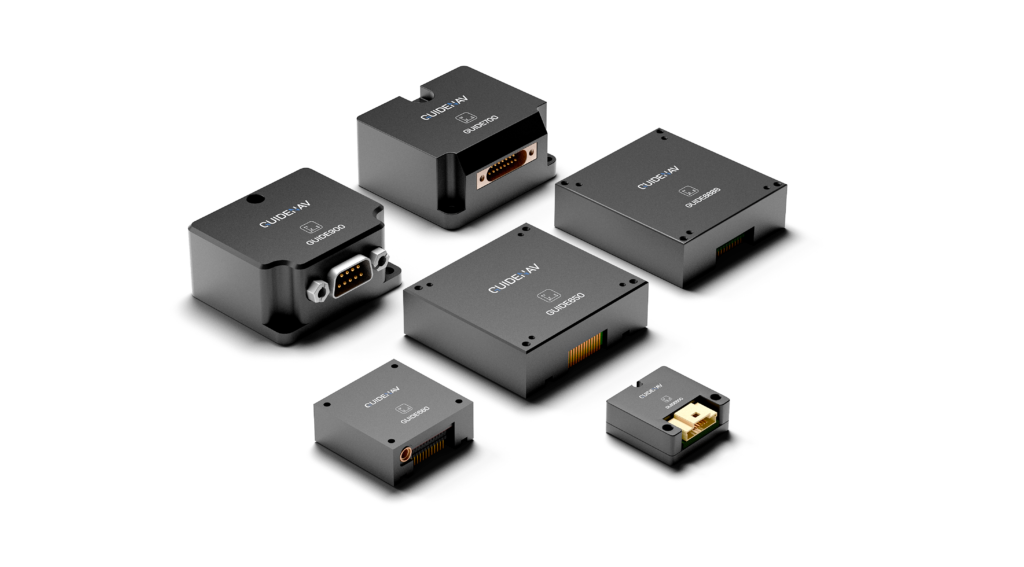I have witnessed drones veer off course and guided vehicles fail their missions within minutes of GPS interference. Traditional IMUs were simply not designed for the harsh realities of modern warfare or demanding industrial operations. When drift grows unchecked, commercial UAVs or delivery drones can lose reliability—and even precision strikes may end in costly failure.
The answer lies in next-generation IMUs—a new generation blending MEMS agility, FOG stability, and AI-driven calibration, now powering both military-grade platforms and high-end civilian systems. In this article, I’ll share six trends that I believe are redefining IMU technology in 2025.
6 IMU trends—MEMS precision, FOG upgrades, AI calibration, and GPS-denied solutions—are redefining tactical navigation this year.
Let me take you inside these trends.When drift grows unchecked, commercial UAVs or delivery drones can lose reliability—and even precision strikes may end in costly failure.

Table of contents
MEMS IMUs Approaching Tactical Precision
Over the past decade, MEMS sensors have evolved from consumer-grade components to tactical-grade IMUs, achieving bias instabilities below 1°/h and angular random walk (ARW) values as low as 0.05°/√h. This level of precision makes them viable for military UAVs, guided munitions, and civilian platforms such as autonomous delivery drones, industrial AGVs, and precision mapping robots.
From my field experience, modern tactical-grade IMUs have demonstrated exceptional stability during high-vibration UAV missions lasting over 4 hours, even under GPS-denied conditions. With its compact design and power draw of only 1 W, it provides an advantage over older-generation systems. While competitors like Honeywell remain formidable, modern MEMS IMUs stand out for their thermal stability and advanced vibration filtering.
My view: MEMS may not replace FOG for long missions yet, but they’re already the backbone for high-dynamic military and commercial applications.
FOG IMU Advancements for Long-Duration Accuracy
Although MEMS IMUs are rapidly improving, FOG sensors continue to dominate long-endurance missions, thanks to ultra-low drift characteristics. State-of-the-art FOG IMUs can achieve <0.05°/h bias stability and ARW <0.01°/√h, enabling precise navigation over hours without GPS corrections.
I’ve tested GuideNav FOG IMUs on naval platforms and ground combat vehicles where drift tolerance is near zero. In these conditions, FOG IMUs offer a reliability that MEMS simply cannot match for long-endurance missions.
Key advantages of modern FOG IMUs:
- Ultra-low drift:Maintains accurate navigation over hours without GPS.
- Environmental resilience:Performs well under high shock (1,000 g) and wide temperature swings.
- Hybrid adaptability:Many platforms now pair MEMS responsiveness with FOG baseline stability.
Example: GuideNav are leading this shift with compact form factors (<0.5 L volume) and lower power consumption than legacy FOG designs.
AI-Enhanced Calibration and Sensor Fusion
Traditional IMU calibration can take hours, but AI has changed everything. I’ve seen machine learning models correct bias drift in real time, improving precision during both high-speed UAV maneuvers and civilian autonomous vehicle testing.
Key improvements I’ve observed:
- Real-time drift correction:Up to 40% less error accumulation.
- Sensor fusion:AI merges IMU, GPS, and camera inputs for smarter navigation.
- Lower lifecycle cost:Reduced need for manual recalibration.
GuideNav’s solution applies adaptive AI correction, maintaining ≤0.2% × distance traveled accuracy during extended GPS outages—performance I’d trust for both military convoys and commercial self-driving fleets.
IMU Arrays and Redundant Architecture
For mission-critical systems—such as guided missiles or high-value UAVs—IMU arrays deliver redundancy and improved precision. By combining data from 3–5 IMUs, noise and random drift can be reduced by over 40% through statistical averaging.
Why IMU arrays matter:
- Redundancy:Even if one sensor fails, navigation remains accurate.
- Enhanced precision:Averaging data from multiple IMUs improves bias stability.
- Custom scalability:Arrays can be tailored for specific mission profiles.
| Feature | Single Tactical IMU | IMU Array (3–5 Units) |
|---|---|---|
| Bias Stability | ~1°/h | 0.4–0.6°/h |
| Reliability | Single point of failure | Redundant, fail-safe |
| Cost | Lower | Higher |
| Applications | UAVs, ground robots | Missiles, strategic drones |
I’ve worked on UAV projects where GuideNav’s custom IMU array solutions achieved near-navigation-grade accuracy, rivaling some FOG-based INS systems.

SWaP-C Optimization for Tactical Platforms
In every defense or UAV project I’ve worked on, SWaP-C (Size, Weight, Power, and Cost) is always one of the first topics raised. A navigation unit that’s too heavy or power-hungry can kill the entire design, no matter how accurate it is. That’s why I’ve seen modern IMUs shift toward extreme miniaturization and energy efficiency, without sacrificing tactical-grade performance.
What I’ve learned from field projects:
- Size and weight:Small UAVs or loitering munitions can’t carry bulky sensors; the IMU must fit into spaces smaller than 60 mm.
- Power efficiency:Reducing power draw by just 3–4 W can extend flight times by 15–20%.
- Cost factor:A well-optimized MEMS IMU often reduces overall system cost while providing tactical-level stability.
Expert Commentary
Performance: Both sensors offer comparable core performance in terms of bias stability and ARW. The GSF30 slightly outperforms on ARW in lab tests and supports a higher input rate.
SWaP Advantage: The GSF30 has a clear lead in Size, Weight, and Power (SWaP). It is over 50% lighter, ~60% smaller by volume, and consumes less than half the power. This is critical for drones, handheld units, and compact payloads.
Startup & Response: GSF30 boots faster (<3 sec), enabling better responsiveness in systems that need instant readiness (e.g., ISR systems, pop-up platforms).
Integration: While the DSP-3000 supports analog output, which helps with legacy compatibility, the GSF30 favors modern digital protocols and customizable output formats (e.g., UART, RS422), which are increasingly preferred in embedded systems.
Environmental Durability: Both sensors offer wide operating temperatures. The DSP-3000 holds an edge in shock endurance, while GSF30 has been validated to MIL-STD-810 vibration/shock conditions for tactical platforms.

GPS-Denied Navigation & Intelligent Integration
I’ve seen entire platforms rendered useless by GPS jamming. The real breakthrough is how IMUs now work with other sensors—LiDAR, radar SLAM, and visual odometry—to maintain accurate navigation.
Key trends in GPS-denied navigation:
Multi-sensor fusion: Combining IMU data with optical/visual inputs reduces drift by up to 60%.
AI-driven alignment: Systems learn terrain or environmental patterns for better positioning.
Resilient autonomy: Platforms can operate for hours without GPS.
GuideNav Deployment:
In recent anti-jamming projects, GuideNav solution integrated with radar-based SLAM maintained <2 m drift over a 40-minute blackout—something I couldn’t have imagined five years ago.
Future Outlook
Looking at where IMU technology is heading, I believe the next three years will mark a major convergence of MEMS agility and FOG stability. MEMS IMUs will continue to push below 0.5°/h bias instability, while FOG systems like GuideNav’s next-gen IMU solutions will become smaller, lighter, and even more energy-efficient. I also expect AI-powered sensor fusion to become the industry norm, enabling platforms to navigate for hours or even days without GPS.
From my field experience, it’s clear that IMUs are no longer just sensors—they’re becoming the “brains” of tactical autonomy. Whether it’s UAVs, naval systems, or land-based combat vehicles, the role of IMUs in mission success is only going to grow.
